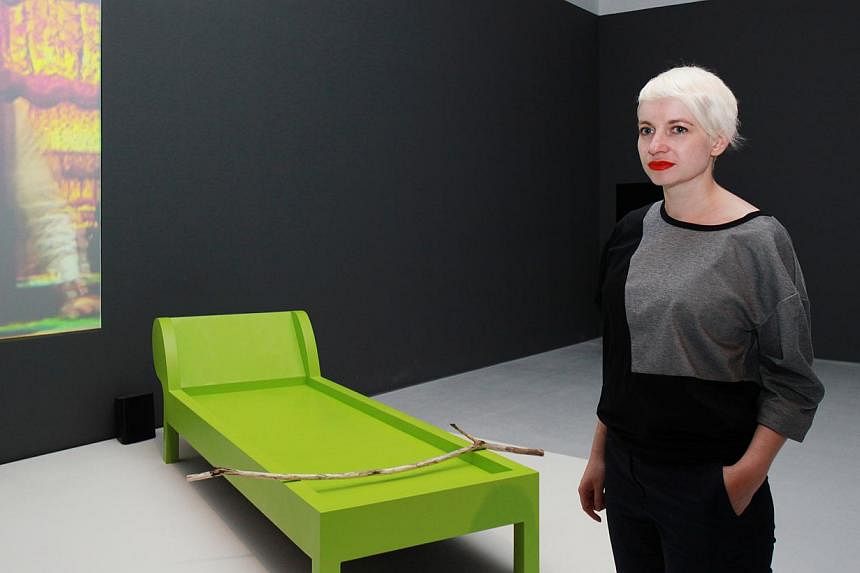Conscious coupling of the visual arts and theatre is in the spotlight at the Centre For Contemporary Art in Gillman Barracks.
Its latest show, Theatrical Fields, timed to coincide with the ongoing Singapore International Festival of Arts, highlights the dynamic exchange and overlaps between theatre and the visual arts, particularly performance, film and video.
The exhibition comprises six video installations by seminal artists who have influenced contemporary art and its discourse, among them British artist and film-maker Isaac Julien, whose video installation Vagabondia (2000) formed part of his nomination for the Turner Prize in 2001; and American performance and video art pioneer Joan Jonas, whose multimedia installation Lines In The Sand (2002) was commissioned for the Documenta exhibition of modern and contemporary art in 2002.
The show is curated by the centre's founding director, Professor Ute Meta Bauer, and its curator of exhibitions, Ms Anca Rujoiu. It was first presented last year at Bildmuseet, a contemporary art and visual culture museum in Umea, Sweden.
Artists in the show use theatrical elements such as written scripts, choreography and character play to critically examine how histories, identities and realities are constructed and performed.
Julien's video installation Vagabondia, a work on memory, desire and colonialism, merges cinematic camera work with choreography. Filmed in the London home-turned-museum of the 18th-century architect and art collector John Soane, it features a black female art conservator who dreams up secrets behind the works in the museum and allows her wandering imagination to conjure a phantasmic vagabond dancing in the space.
Ms Rujoiu, 30, says: "These are not separate fields of art, the distinctions between them are faint. But when they interact, it leads to something else."
This genesis of a unique visual language is not new. She says the roots of this hybridity may be traced back to as early as the avant-garde art practice of the 1920s, such as "the Dada movement and the Surrealists, who were staging live performances and using costumes" in their works.
Such artistic cross-breeding continues to take on fresh permutations today. This notion of overlapping fields is deliberately mirrored in the layout of the exhibition too, she says. The installations are made to spill, spatially and sound-wise, onto one another.
This idea of cross-pollination is also seen in the glossary of keywords such as "protagonist" and "play", which are tucked away in low corners of the gallery walls, as if they were scattered footnotes. These words offer viewers ways to consider how different methods and approaches in theatre are at play in the works.
Public programmes organised around the exhibition will explore how theatricality is used as a critical tool in various disciplines of contemporary art and culture.
The activities - comprising lectures, artists' talks and workshops - includes a presentation by Singapore-based theatre researcher Miguel Escobar on contemporary Javanese shadow puppetry, and a talk by Associate Professor Petrus Liu of the Yale-NUS College, which addresses how theatricality is used as a political strategy to challenge gender boundaries.


